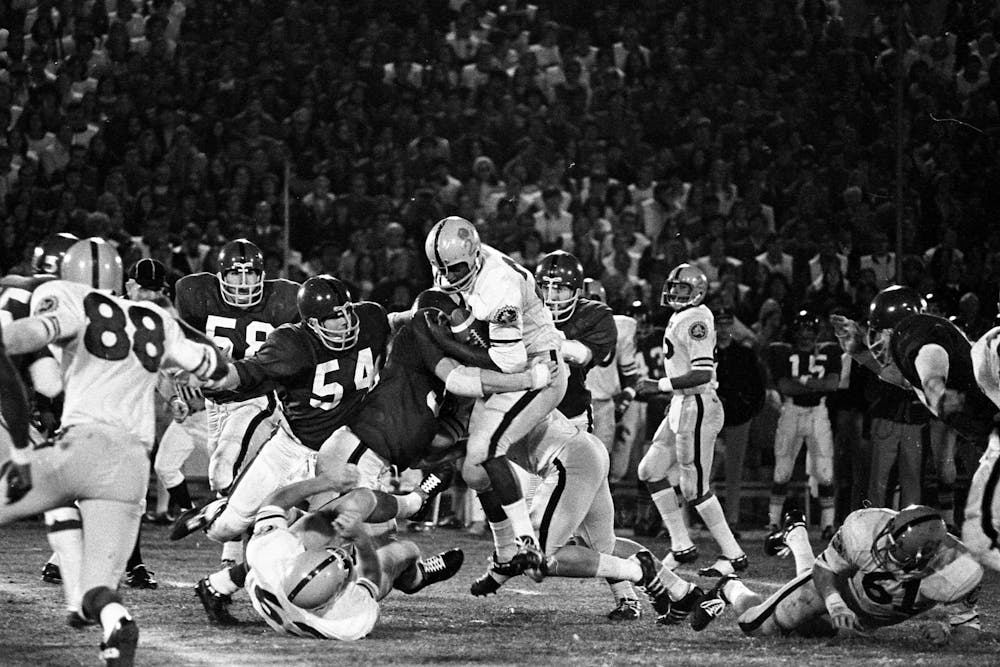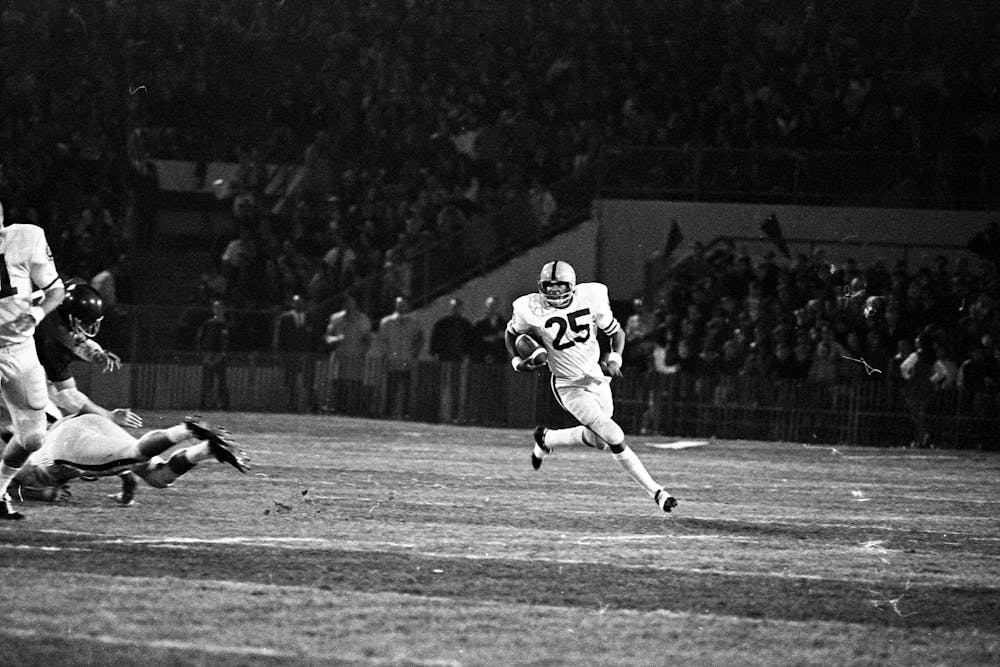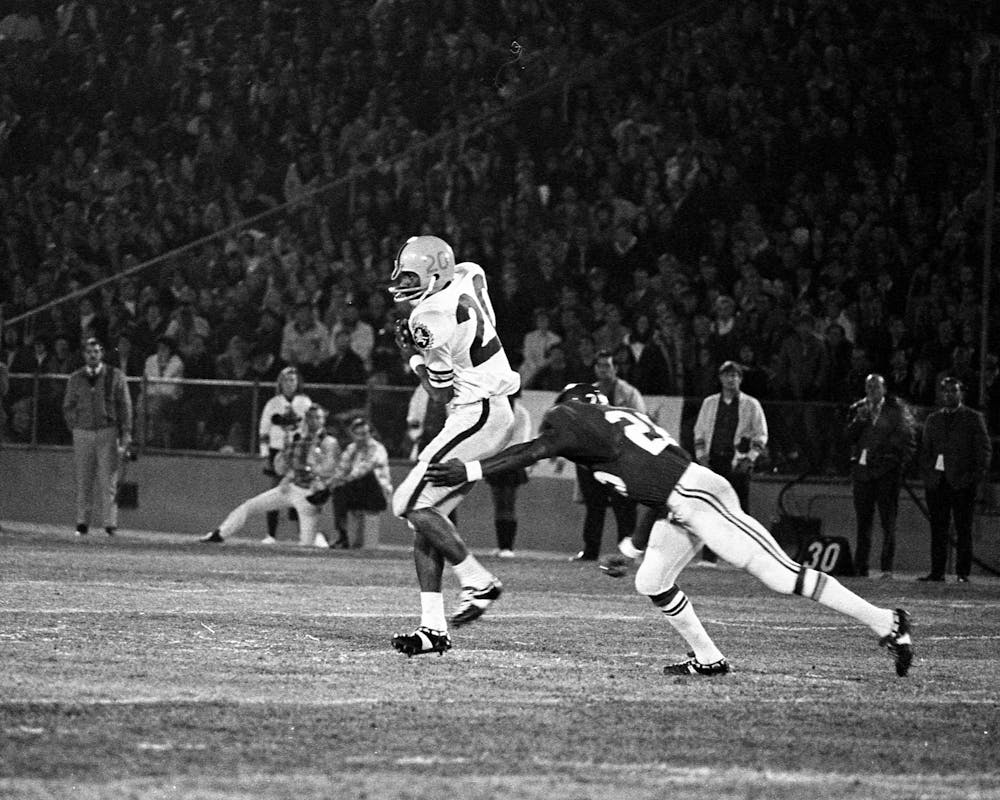It has now been 50 years since the 1970 ASU football team, led by legendary head coach Frank Kush, stormed its way to a perfect 11-0 season to kick off the program’s winningest decade in history.
The Sun Devils finished the season as the only team in the AP top 10 without a loss or tie. Only two of the team's games were decided by a single score, and its average margin of victory of over 20 points was the second-best of any team in the top 10.
Yet, in a decision then-quarterback Joe Spagnolo attributes to a lack of national coverage, ASU finished the season ranked just sixth.
“It’s a shame that they don’t have the same voting systems they do today,” Spagnolo said.
The Sun Devils had been trending upwards leading up to the 1970 season, having gone 8-2 in each of the previous three seasons and topping the Western Athletic Conference in 1969.
However, they had not been to a bowl game since the 1950 season, meaning that in his 12 years with the program, Kush, despite an 89-30-1 record at that point, had never notched a postseason appearance.
“We wanted to win for Kush,” guard Gary Venturo said. “Over the years, ASU had been disrespected.”
A great deal of that “disrespect” was driven by regional bias, Spagnolo said.
“(People thought), ‘They're a bunch of beer drinking cowboys from out west,'” said Danny Kush, Frank Kush’s son and a water boy for the 1970 Sun Devils. “‘They don't play real football out in Arizona.’”
Perceived slights against ASU had extended beyond just an anti-West bias in recent years, as well, adding to the team’s collective desire to prove its worth.
Most notably, the Sun Devils were denied a bowl appearance in 1968, despite posting an 8-2 record and finishing the season with a 30-7 win over UA, who was chosen over them to participate in the Sun Bowl.
By 1970, ASU boasted a strong, unified senior class, many of whom were affected by the Sun Bowl decision, which was ready to “take their fate into their own hands” as Danny Kush said, to ensure there would be no such controversy again.
The Sun Devils rostered three All-Americans in Venturo, cornerback Windlan Hall and wide receiver J.D. Hill, who set ASU records in receptions, receiving yards and touchdowns would go on to be the fourth pick of the NFL draft and a pro bowler with the Buffalo Bills. Spagnolo was an established third-year starter as well. Defensive ends Mike Fanucci and Junior Ah You, along with running backs Bob Thomas and Monroe Eley all went on to play professionally.
Yet ASU was not defined by talent — instead, it was the synergy and shared identity of a large group of multi-year starters.
“There weren’t a lot of superstars (on the 1970 team),” Danny Kush said. “But they always had this positive but not egotistical confidence of just, ‘We're going to win this game.’”
That confidence was supported by the results, as only one of ASU’s first eight games was decided by less than three touchdowns — a 37-30 win over Washington State.
After their eighth victory, a 37-14 win over the University of Utah, Spagnolo said the team became confident that an undefeated season was possible.
But the job was not done, and the Sun Devils’ mighty offense, which averaged 36.8 points per game, struggled in their final regular season game against UA, scoring a season-low 10 points.
“We went from being an open offense to a conservative offense, and that almost did us in,” Spagnolo said.
Yet the Sun Devils survived on the back of a stingy defensive performance, holding the Wildcats to just six points.
It was a particularly meaningful victory for the Sun Devils, Danny Kush said, who had not forgotten the bowl controversy two years prior. According to Danny Kush, assistant coach Donald Baker left a message for the Wildcats on their locker room whiteboard after the win: Sun Bowl. Up yours.
That victory set up ASU’s first postseason appearance in nearly two decades, a Peach Bowl showdown versus North Carolina, in which the Sun Devils were treated to unusual conditions.
“At halftime, it snowed like I had never seen before,” Spagnolo said.
Facing a test from the elements and a halftime deficit, the Sun Devils responded, scoring 27 unanswered points in the second half to beat the Tar Heels 48-26, completing the perfect season.
“That was the big benchmark in putting Arizona State on the collegiate record book,” Fanucci said. “This is a team that everybody needs to start taking a hard look at.”
Over the next five years, the Sun Devils grew into a consistent national power, winning four Fiesta Bowls and posting a 51-9 overall record. Although the 1970 Sun Devils may not have received the national recognition they deserved for their unrivaled dominance, their role in making that future success possible is unquestioned.
“We started the ball rolling,” Venturo said. “We're very proud of that.”
Five decades later, and Spagnolo, Venturo and Fanucci are all still in regular contact with their former teammates.
“Even though I left this area for about 25 or 30 years, when I moved back, it was like I never left,” Spagnolo said. “We retained our relationships.”
Spagnolo and Venturo both still meet with a small group of former teammates every month, a tradition that has continued throughout the pandemic.
“We stand underneath the trees, six to eight feet apart, and we talk about old times and how neat it was to be on that winning team that put ASU on the map,” Venturo said.
Reach the reporter at cbreber@asu.edu and follow @carsobi on Twitter.
Like State Press Sports on Facebook and follow @statepresssport on Twitter.







